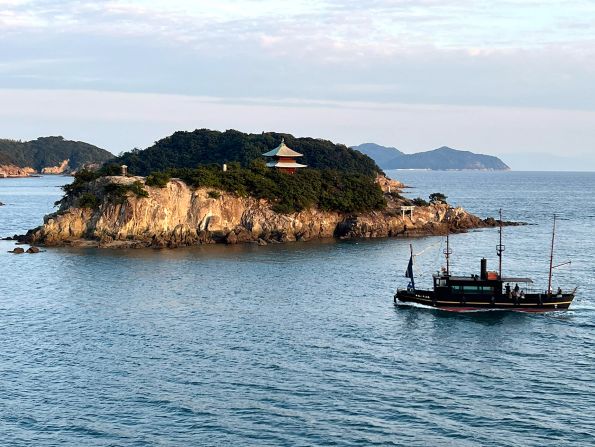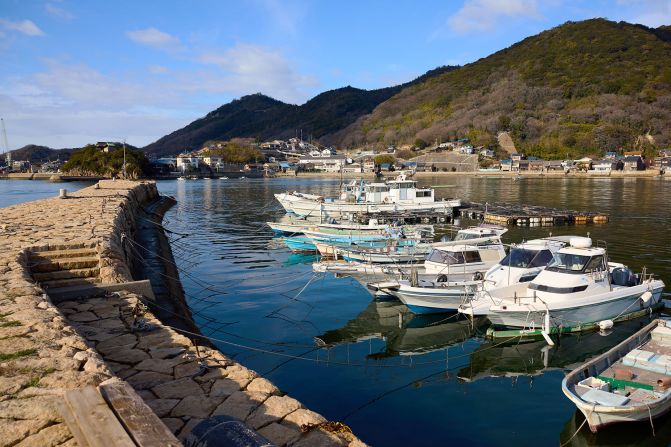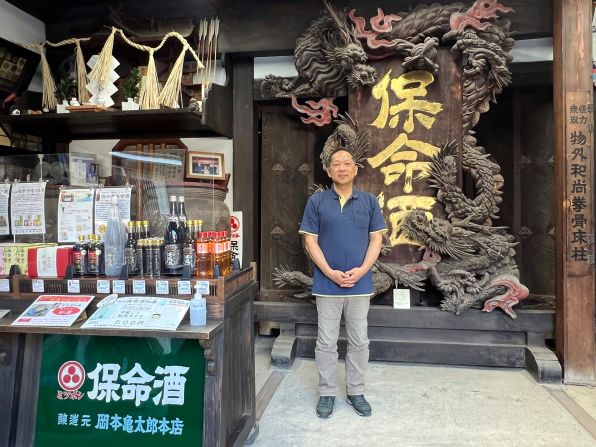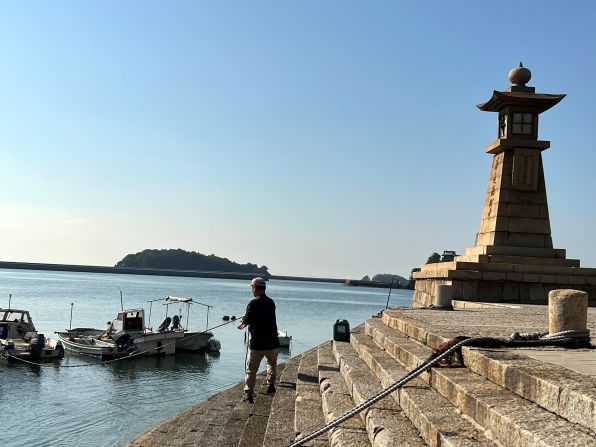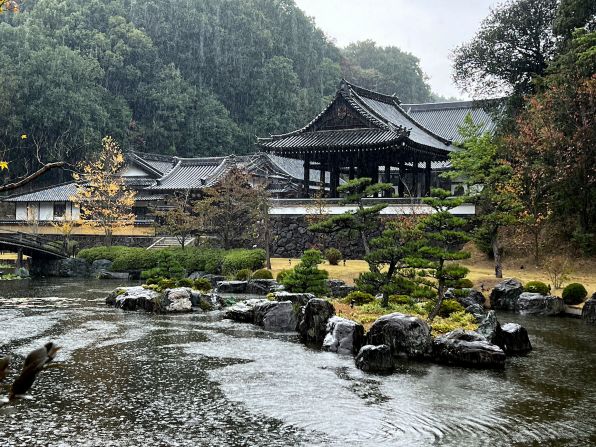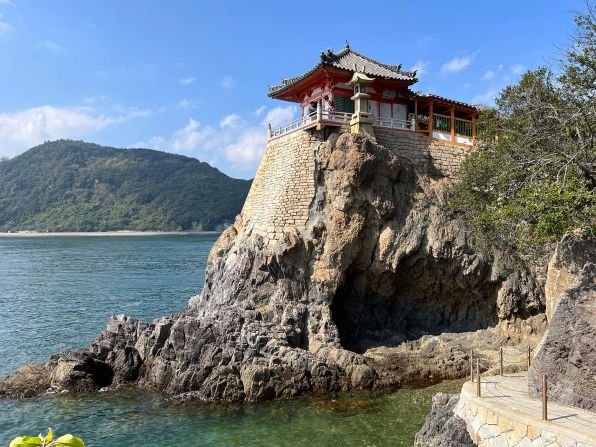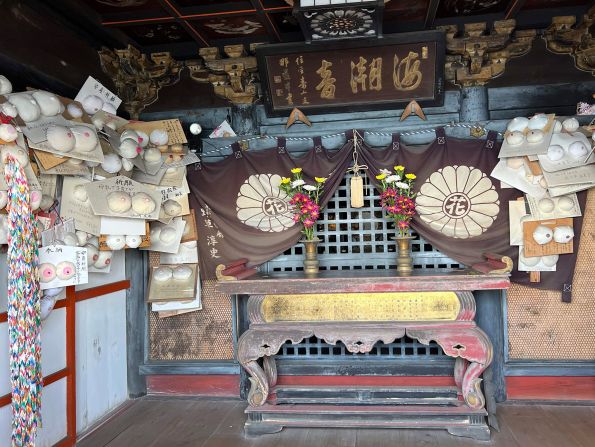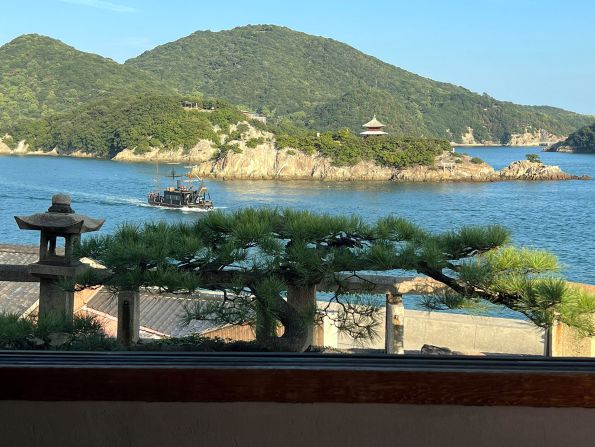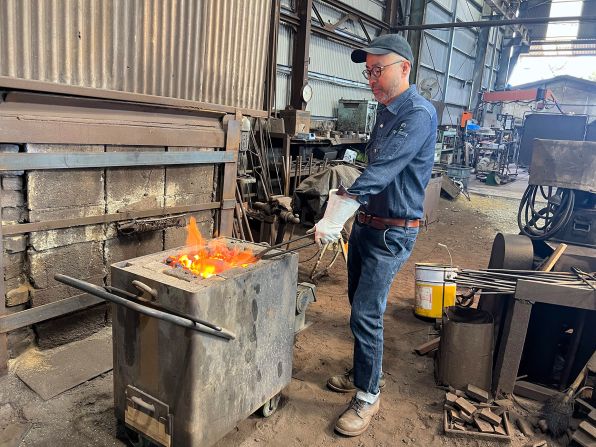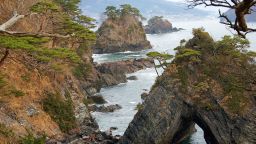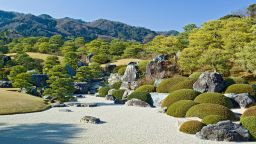Editor’s Note: This CNN Travel series is, or was, sponsored by the destination it highlights. CNN retains full editorial control over subject matter, reporting and frequency of the articles and videos within the sponsorship, in compliance with our policy.
Shopkeeper Yuri Koshimizu is kind enough to explain why a small, rudimentary box hangs from the ceiling, high above an assortment of homeishu (medicinal liquor), clay figurines and homemade soaps.
It’s for the swallows, she says through. That is, to catch the droppings from their nest above it.
“They pass through from May to August,” she says, laughing as she points out a hole in the door that allows the birds to come and go even when the shop, Homeishuya, is closed.
“I think they’re the same ones who come back every year.”
In Japan, swallows are considered good luck.
But it’s not just luck that has protected Tomonoura, a village in Hiroshima prefecture that has occupied prime real estate on the coast of the Seto Inland Sea for more than 1,400 years.
Mother nature and the absence of industrialization that modernized other port towns like Kobe and Hiroshima following the 19th century demise of the shogun military rulers have preserved a wealth of historic architecture from the Edo Period (1603-1868) that few coastal towns can match. Grassroots initiatives have also helped.
Yet Tomonoura, with a population of about 3,350 people, remains a sleepy, low-key hamlet, a welcome refuge from the overcrowding that afflicts Tokyo, Kyoto and other popular destinations.
Japanese people know it as the movie setting for Marvel’s “The Wolverine,” as well as the inspiration for Studio Ghibli’s animated “Ponyo on the Cliff by the Sea,” produced by director Hayao Miyazaki after he reportedly rented a house here for two months.
But it’s relatively unknown to foreign visitors, despite easy access via a 30-minute bus ride from Fukuyama Station, a stop on the Shinkansen bullet train running between Tokyo and Hiroshima City. After that, you need only your two feet to explore this compact historic district.
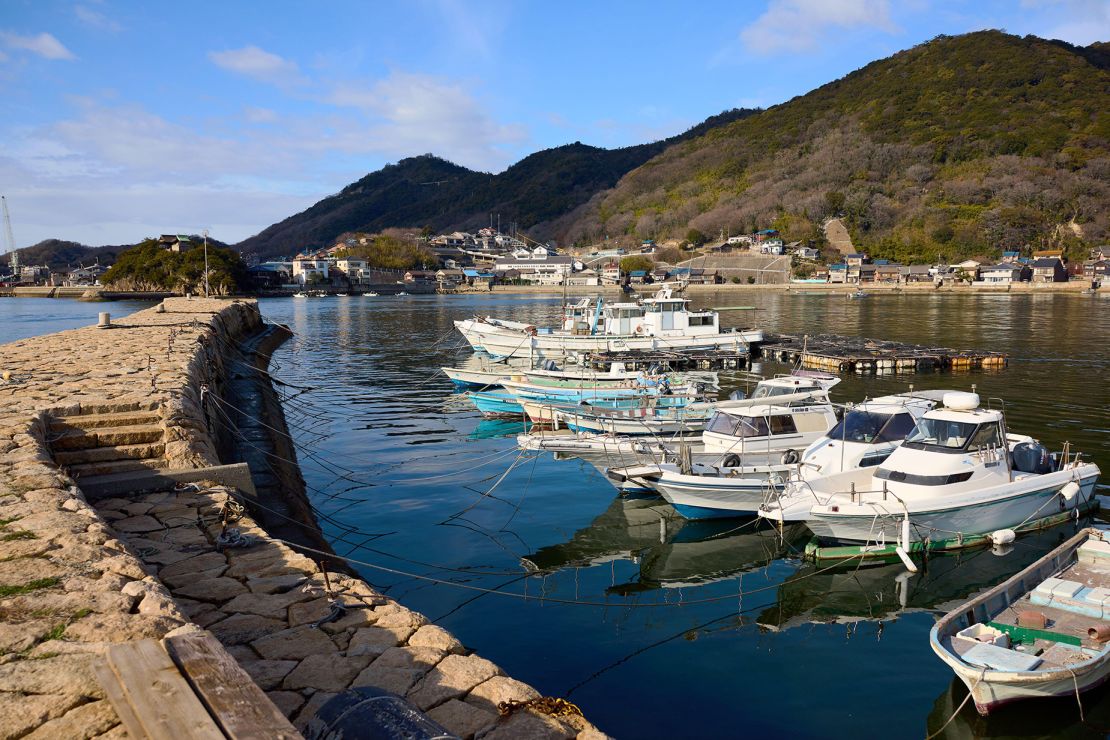
The port that waits for the tide
Tomonoura sits at the coastal center of Setonaikai National Park, established in 1934 as one of Japan’s first national parks. Encompassing the entire Seto Inland Sea, as well as coastlines along the main islands of Honshu, Shikoku and Kyushu, this protected area includes some 3,000 mostly uninhabited islands and islets, beaches, channels, bays, coves, capes and promontories.
Cities within its environs are part of the park, including Tomonoura, which commands sweeping views of the sea and islands.
Although no one knows Tomonoura’s origin, it’s mentioned in eight of Japan’s oldest tanka poems, written between 600 and 750 CE.
Located on a peninsula where currents flowing from both the east and west converge, its port flourished.
Because ships had to wait for the turning of tides and favorable winds to carry them out again, Tomonoura was known as a shiomachi no minato, literally, “port waiting for the tide.”
The tides are said to have brought all kinds of travelers, including merchants, feudal lords, warriors, pirates, writers, revolutionaries, Dutch traders from Nagasaki and Korean envoys.
Things have settled down since then, but many of Tomonoura’s early visitors might still recognize its small, circular harbor, beyond which radiate narrow backstreets lined with traditional townhouses, temples and shrines. Some 280 buildings date from the Edo Period, including more port-related structures than anywhere else in Japan.
The 36-foot tall Joyato, the tallest stone lighthouse in Japan, still serves as the spiritual heart of the harbor, home to many fishing boats. Below the lighthouse, a 24-step stone dock descends into the sea, constructed to facilitate the loading and unloading of cargo regardless of tide levels.
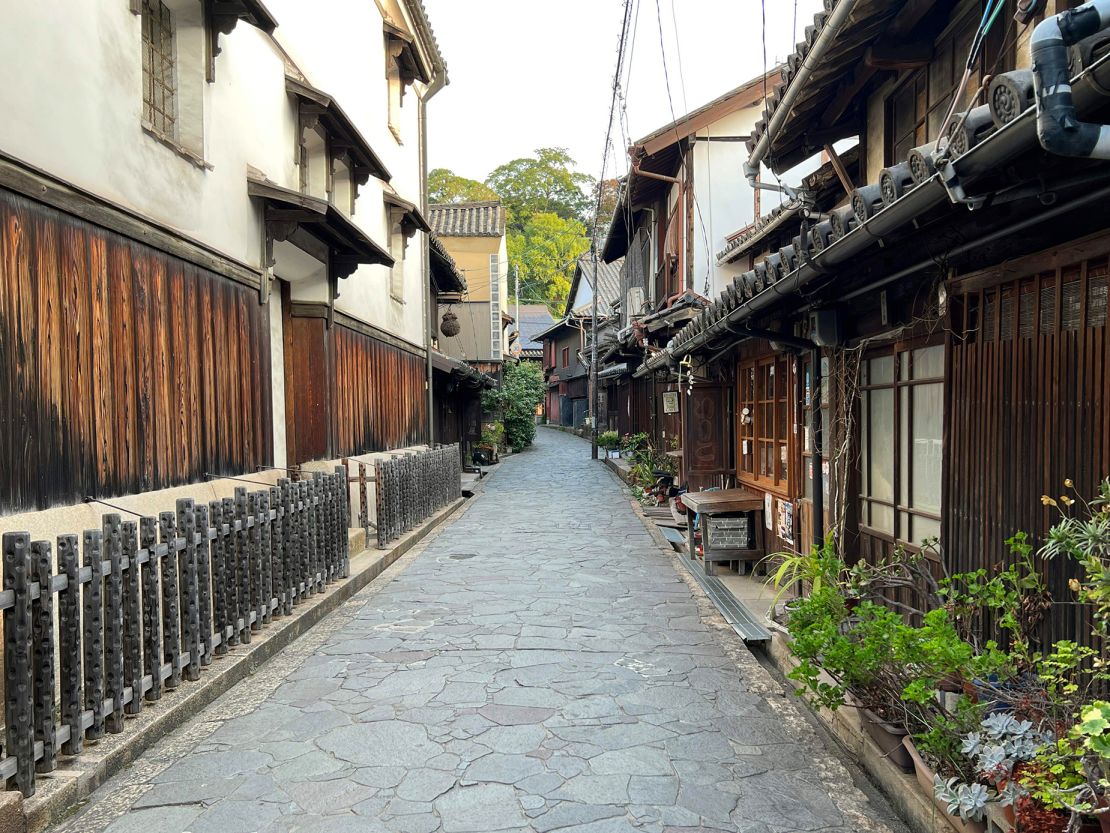
A trip through town
The only way through town, hemmed in by mountains on one side and the sea on the other, is on a main road that doesn’t look like a main road at all. Signs remind pedestrians to stick to its sides (like most neighborhood streets, it doesn’t have sidewalks), rather than wander along its middle.
Certainly, wandering is the primary joy, with village life on full display. People walk their dogs. Fishing boats come and go. A man sells seafood from the back of his truck.
Tomo, as it’s affectionately called, has a retro feel, evident in stores like Hirai Shoten. Bread, dish detergent and other daily necessities line its wooden shelves, but the Japanese lantern out front announces that its specialty is oden, a Japanese comfort food.
And there it is, simmering in a black iron pot next to a small table and a couple of chairs. When the proprietress lifts the lid, the aroma of a hearty stew of fish cakes, boiled eggs, daikon radish, fried tofu and other ingredients wafts into the air.
Tomo’s English map of historic sites includes more than two dozen temples and shrines, but who can resist a stop at the Burial Mound for the Severed Head of Yamanaka Shikanosuke? A faithful servant who tried to raise an army after his master was killed, Yamanaka literally lost his head, which was displayed here for all to see.
The Edo Period abounds in stories like these.
Happier times were celebrated at Fukuzenji Temple, built around 950 but famous for its adjoining reception hall, Taichoro, constructed in traditional Japanese style with tatami mats on a cliff overlooking the sea.
Today’s views look much like they might have back then, with uninhabited Benten Island and its pagoda across the channel, Sensui Island just beyond.
Every 20 minutes, what looks like a 150-year-old steamship chugs past on its five-minute run between Tomo’s waterfront and Sensui.
The municipal ferry was built by a local shipyard as a replica of the Irohamaru, commandeered by samurai Ryoma Sakamoto and famously sunk in 1867 after a collision with another steamship of an opposing clan.
According to the history books, Ryoma sought compensation and won but was assassinated shortly thereafter in Kyoto. An Edo-era warehouse serves as a museum for the folk hero and features ship items retrieved from the sea.
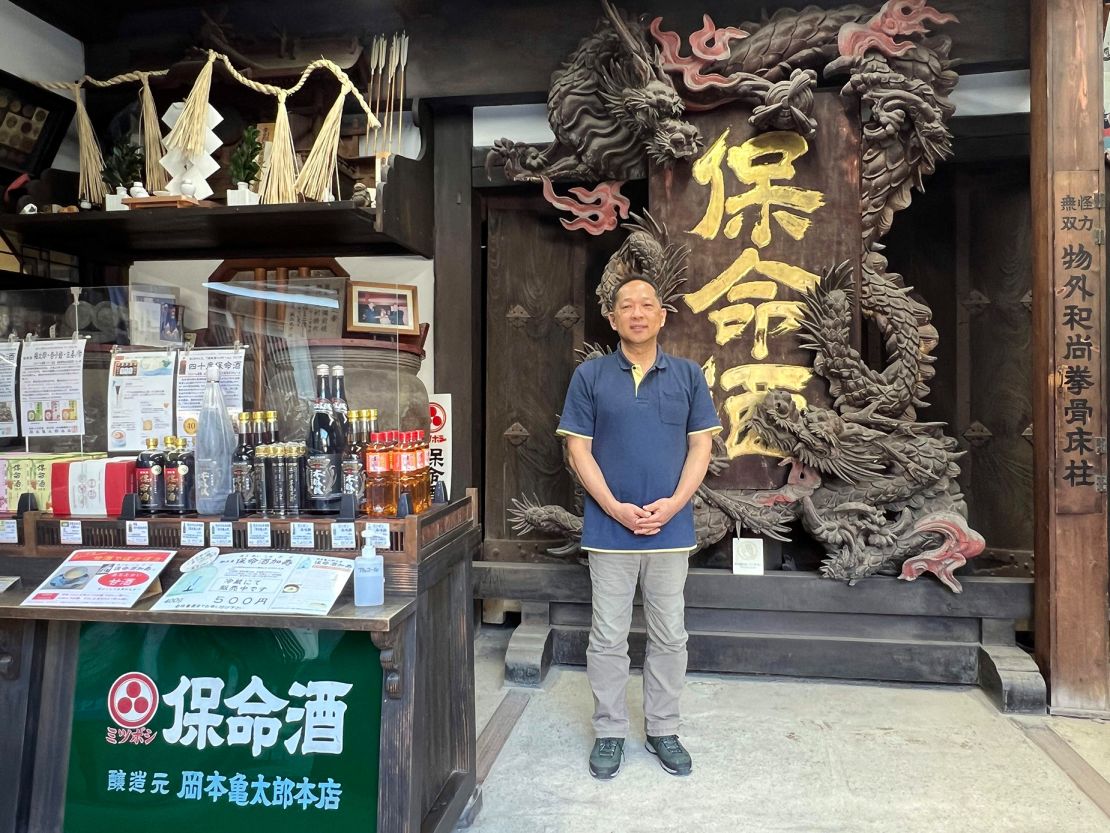
The home of homeishu
The Ota Residence is Tomo’s most imposing townhome, a compound of nine buildings, including the two-story main house, storehouses and a brewery for making homeishu.
The proprietors of the house, the Nakamura family, were knowledgeable in Chinese herbal medicine and created homeishu in 1659, a medicinal liquor using 16 herbs and plants. They were later granted the sole rights to produce and sell it, maintaining a monopoly throughout the Edo Period.
The cure-all became a favorite of visiting feudal lords and wealthy merchants. It was even served to celebrated US naval officer Commodore Perry during his 1853 historic visit to Shimoda.
Today four homeishu breweries carry on the tradition, including Homeishuya, home of the swallows. But because the Nakamuras never shared their recipe, each brewery’s homeishu varies depending on its mix of spices, which includes ginseng, cinnamon, licorice, clove, saffron and fennel.
Okamoto Kametaro Honten began making sake in 1855 but shifted to homeishu during the Meiji Period (1868-1912) after acquiring the Nakamura family’s brewing equipment and impressive dragon signboard.
Ryochi Okamoto, a sixth-generation brewer, takes pride in his traditional brewing method, which starts with the production of his own mirin (a type of sweet sake with a lower alcohol content).
Homeishu can be enjoyed straight, on the rocks, mixed with soda or in cocktails. To meet the demands of the younger generation, Okamoto also produces homeishu with plums, apricots or ginger.
As for homeishu’s purported medicinal value?
“It’s good for blood circulation and is useful if you have cold fingers and toes,” Okamoto says. “Mostly, it’s a cleanse from the inside.”
Tomonoura’s other famous industry has long been metalworking, due to all those ships waiting for tides that required anchors and nails. About 10 companies remain, but Sangyo Corporation is the only one that utilizes not only modern, computerized techniques but also traditional methods.
Like Okamoto, third-generation president Hiromasa Hayama hopes to appeal to the younger generation with products like camping skillets, a metalworking class and a hip shop called Santo that includes a bar.
In terms of accommodation, Tomo has plenty of seaside hotels. Among the highlights is Ofutei, which features an open-air rotenburo (open-air bath) on its roof.
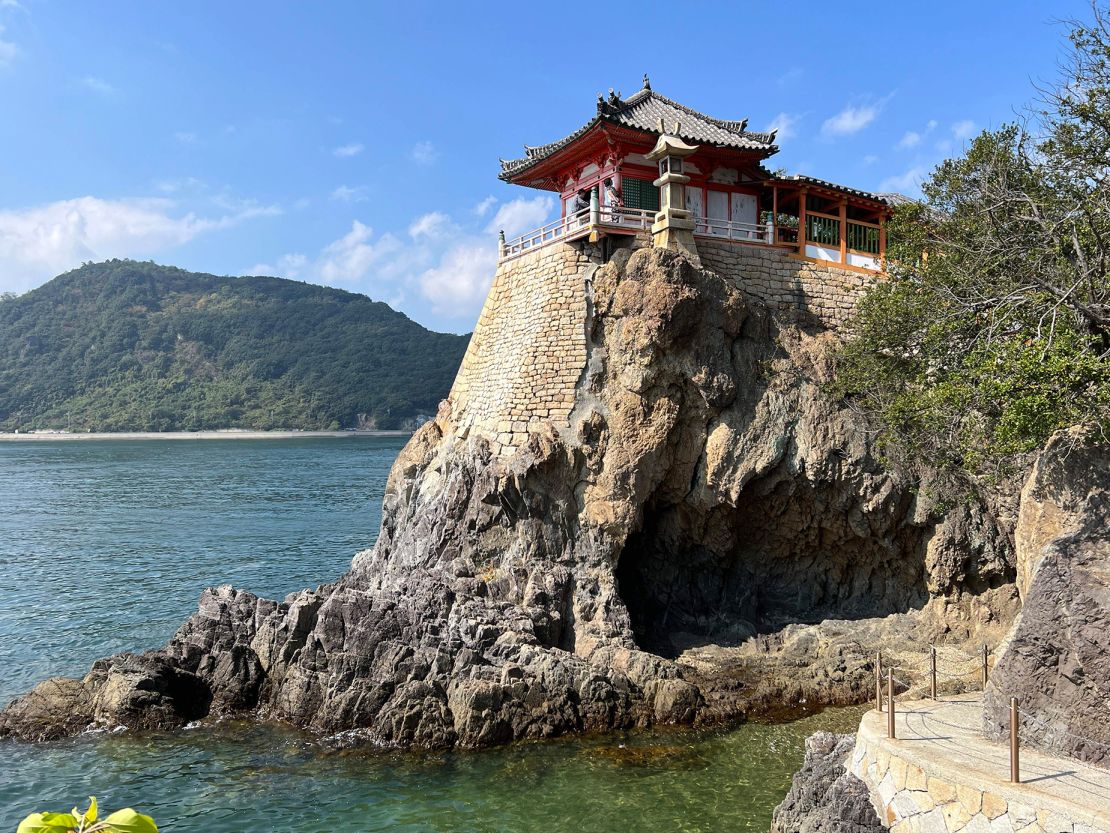
Nearby excursions
If time allows, it’s worth taking the Heisei Iroha Maru ferry to Sensui Island for its swimming beach and Jinseikan Ga Kawaru Yado Koko Kara, a hotel whose name loosely translates as “where your sense of life will change from here.”
Its tatami rooms offer peaceful views, and the restaurant serves full-course meals that include sea bream, a local specialty. Many Japanese come solely for the hotel’s so-called Edo-style public bath, a succession of primitive, cave-like saunas steeped with mugwort, loquat leaves and seaweed, which you combine with dips in cold and warm water and the sea.
Another worthwhile excursion is Abuto Kannon, a vermillion-colored temple four kilometers (2.5 miles) from Tomo that sits above the sea on a rocky cliff.
Built by warlord Terumoto Mori in 1570 and dedicated to the 11-faced Goddess of Mercy, it attracts seafarers hoping for safe passage and pregnant women praying for a safe delivery and an ample supply of breast milk.
That explains the unusual sight here: handmade rice-filled models of breasts left by thankful mothers.
Another attraction is Shinshoji Zen Museum and Gardens, a 25-minute taxi ride from Tomonoura or Fukuyama Station. Secluded in the woods, this Rinzai school temple invites relaxation as you stroll around its exquisite Garden of the Appreciating Heart. Its pond, with moss-covered mounds, boulders, stunted pines and waterfalls, is replete with symbolism.
Shinshoji also offers tea houses, an udon lunch traditionally served to monks, a bathhouse, zazen (seated meditation), sutra copying and an extensive collection of Zen art by Hakuin (1686-1769).
KOHTEI, which looks like a floating celestial object, is a 2016 collaboration by sculptor Kohei Nawa and architectural team SANDWICH. It serves as a theater for a contemporary Zen art installation, with darkness and light playing softly on images of rippling water.
Visitors can stay for a few hours or sign up for more in-depth overnight Zen experiences lasting one or two days.
